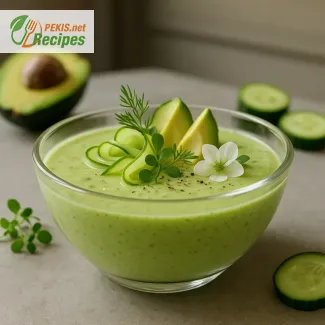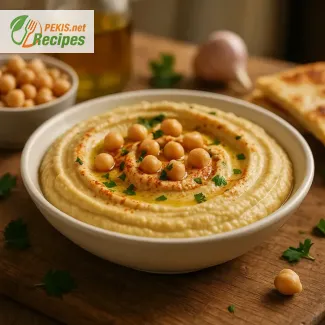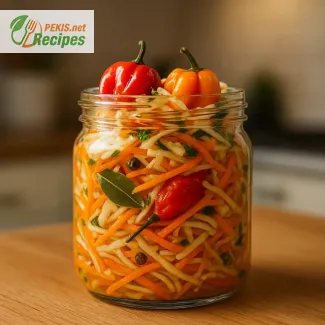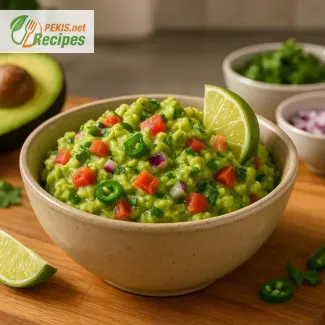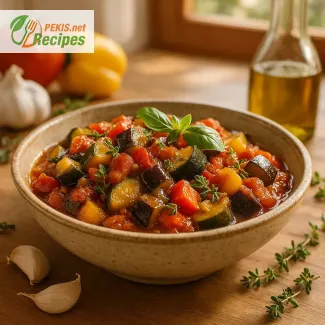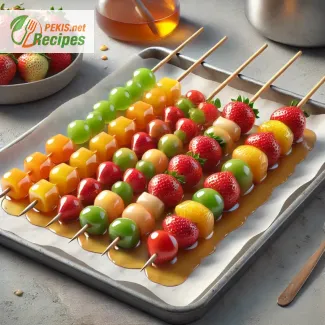
Tanghulu, often referred to as candied fruit on a stick, is a mesmerizing blend of simplicity and indulgence. Originating from Northern China, this iconic street food has captured the hearts of food enthusiasts worldwide, turning humble fruits into glossy, jewel-like treats coated in hardened sugar. Tanghulu isn't just a snack—it's a sensory experience that delights with its stunning visual appeal, satisfying crunch, and irresistible sweetness.
The magic of Tanghulu lies in its delicate sugar shell, which encases the natural juiciness of fruits like strawberries, grapes, oranges, or traditional hawthorn berries. When you bite into a Tanghulu skewer, the crispy coating shatters to reveal the fresh, tart burst of fruit inside, creating a perfect contrast of textures and flavors. This balance of sweet and tangy is what makes Tanghulu a treat that stands out among sugary confections.
A Culinary Tradition with Modern Flair
Tanghulu's history dates back to the Song Dynasty, where it was originally made with hawthorn berries as a remedy for digestive health. Over centuries, it has evolved into a popular street food and festival favorite. While hawthorn berries remain a classic choice, modern variations have embraced a wide range of fruits, offering options for every palate.
What truly sets Tanghulu apart is its visual appeal. Rows of vibrant, sugar-coated fruits gleam under the light, making them as much a feast for the eyes as they are for the taste buds. Whether sold from bustling street vendors or recreated in home kitchens, Tanghulu carries an air of festive joy and nostalgia, evoking the charm of traditional Asian street markets.
The Allure of Simplicity
One of the reasons Tanghulu has gained such popularity, particularly in recent years through social media, is its simplicity. At its core, Tanghulu requires just two ingredients: fresh fruit and sugar. The process is straightforward yet fascinating, as the fruit is dipped into boiling sugar syrup and allowed to cool, creating that signature crunchy coating. Watching this transformation is almost as satisfying as eating it.
Tanghulu has also become a canvas for culinary creativity. Some modern twists include adding sprinkles, edible flowers, or using exotic fruits like dragon fruit, kiwi, or even cherry tomatoes. These updates keep Tanghulu relevant and appealing to global audiences while staying true to its roots.
Why Tanghulu is Perfect for Every Occasion
Tanghulu’s versatility makes it suitable for any setting, from casual snacks to elegant dessert presentations. Its compact size and stick-based serving style make it convenient for festivals, parties, or even as a quick pick-me-up treat. Moreover, Tanghulu is naturally customizable—you can adjust the level of sweetness by choosing fruits with varying degrees of tartness or even experimenting with sugar alternatives like honey or coconut sugar for a slightly healthier twist.
Beyond its flavor and aesthetics, Tanghulu appeals to those seeking culinary nostalgia or an exotic, Instagram-worthy snack. Its popularity continues to soar as food lovers embrace global cuisines and seek out exciting new textures and experiences.
A Bite of Joy, One Stick at a Time
Tanghulu isn't just food—it's an art form and a celebration of the natural beauty of fruit. Whether enjoyed on a chilly winter evening on the streets of Beijing or made at home to delight friends and family, Tanghulu embodies the spirit of joy, indulgence, and creativity. Its timeless charm and universal appeal ensure that this simple yet captivating treat will continue to enchant generations to come.
For those looking to explore the world of traditional Chinese street food, Tanghulu is a must-try experience. With its eye-catching appearance, delectable flavor, and cultural significance, it’s more than just a snack—it’s a story waiting to be savored.
- Prepare the Fruits:
Wash the fruit thoroughly and pat dry with a clean towel. Ensure all fruit is completely dry to prevent the sugar syrup from slipping off. If using larger fruits like strawberries, remove stems. For smaller fruits, ensure no seeds or pits remain. - Skewer the Fruit:
Thread the fruit onto the wooden skewers. Mix fruits or use a single type per skewer for aesthetic variety. Avoid overcrowding the skewer—3 to 5 pieces per stick are ideal. - Make the Sugar Syrup:
In a medium saucepan, combine granulated sugar, water, and corn syrup. Heat the mixture over medium heat, stirring gently until the sugar dissolves. Stop stirring once dissolved and bring the mixture to a boil. - Achieve the Hard Crack Stage:
Allow the syrup to boil until it reaches 150°C (300°F), the "hard crack" stage. Use a candy thermometer to monitor the temperature. Do not stir to avoid crystallization. Once the syrup reaches the desired temperature, remove it from heat immediately. - Coat the Fruits:
Working quickly, tilt the saucepan slightly and dip each skewer of fruit into the syrup, ensuring an even coat. Let the excess syrup drip off, then place the skewer on a parchment-lined tray or non-stick surface to cool and harden. - Serve:
Once the sugar coating is fully hardened (approximately 5 minutes), your Tanghulu is ready to enjoy. Serve immediately for the best crunch.
Enhancing Tanghulu: Professional Tips and Tricks for the Perfect Candied Fruit
Tanghulu, with its delightful combination of crisp sugar coating and juicy fruit, is a deceptively simple recipe. However, minor adjustments and thoughtful considerations can elevate this treat from a basic dessert to an exceptional culinary creation. Below are detailed tips to enhance various aspects of the recipe, from ingredient selection to preparation techniques.
1. Selecting the Best Fruits for Tanghulu
The choice of fruit directly impacts the flavor, texture, and aesthetic appeal of your Tanghulu.
- Balance Sweetness and Tartness: Fruits with a balance of natural sweetness and tartness work best. While traditional Tanghulu uses hawthorn berries, strawberries, green grapes, and mandarin slices are excellent modern substitutes. For a unique twist, try kiwis, blueberries, or even cherry tomatoes.
- Uniform Size Matters: Choose fruits that are similar in size to ensure even coating and a consistent crunch. This is especially important when mixing different types of fruit on one skewer.
- Freshness Is Key: Always use fresh, firm fruits. Overripe or overly juicy fruits can make the sugar coating slip off, compromising the texture and appearance.
2. Preparing the Fruits
Proper preparation ensures the sugar adheres to the fruit and delivers the desired crunch.
- Dry Completely: After washing, pat the fruits completely dry with a towel. Residual moisture can cause the sugar to crystallize unevenly or slide off.
- Remove Uneven Surfaces: If using fruits like strawberries, cut off any uneven or damaged parts to ensure a smooth coating.
3. Perfecting the Sugar Syrup
The sugar coating is the highlight of Tanghulu, and achieving the right consistency is critical.
- Monitor the Temperature: Use a candy thermometer to ensure the syrup reaches 150°C (300°F), the hard-crack stage. If the temperature is too low, the coating will be sticky and not crunchy.
- Avoid Stirring: Once the sugar has dissolved, avoid stirring the syrup to prevent crystallization. Instead, gently swirl the pan to mix.
- Control Browning: If your syrup begins to brown, reduce the heat slightly or work faster. Browning indicates caramelization, which changes the flavor and makes the sugar brittle.
4. Adding Flavor to the Syrup
Enhance the sugar syrup with subtle flavors to complement the fruit.
- Citrus Zest: Add a strip of lemon or orange zest to the boiling syrup for a hint of citrus. Remove before dipping.
- Vanilla or Almond Extract: A few drops of extract can add complexity to the sugar coating.
- Infused Sugar: Simmer spices like cinnamon sticks or star anise in the syrup for a warm, aromatic touch.
5. Techniques for Dipping and Cooling
The way you dip and cool the fruit skewers affects the final appearance and texture.
- Work Quickly: Once the syrup reaches the right temperature, dip the skewers immediately to prevent the syrup from cooling and thickening.
- Tilt the Pan: Instead of fully submerging the skewers, tilt the pan to create a deeper pool of syrup. This ensures even coating with less waste.
- Non-Stick Surfaces: Place the coated skewers on a parchment-lined tray or silicone mat. Avoid placing them on regular surfaces, as the sugar will stick and break.
6. Visual Appeal and Presentation
Tanghulu’s charm is as much about its aesthetics as its taste.
- Mix and Match Fruits: Create vibrant skewers by mixing colorful fruits like red strawberries, green grapes, and golden mandarin segments.
- Add Edible Decorations: Sprinkle edible glitter, crushed nuts, or freeze-dried fruit powder onto the sugar before it hardens for added texture and color.
- Keep Portions Small: For smaller fruits like blueberries or raspberries, thread more pieces onto the skewer to make them visually appealing.
7. Healthier Variations
For a slightly healthier twist, you can adjust the ingredients and preparation.
- Alternative Sweeteners: Replace white sugar with coconut sugar, honey, or maple syrup. While these won’t achieve the same hard-crack stage, they offer a softer coating with a rich, natural flavor.
- Less Sugar Coating: Dip only part of the fruit into the syrup, leaving some natural fruit exposed for a lighter sweetness.
8. Troubleshooting Common Issues
Tanghulu is simple in concept, but small mistakes can affect the final result.
- Syrup Hardens Too Quickly: If the syrup cools before you finish dipping, reheat it gently over low heat without adding water.
- Sticky Coating: This usually occurs if the syrup didn’t reach the hard-crack stage. Ensure your candy thermometer is accurate and calibrated.
- Sugar Doesn’t Stick: Check that the fruit is completely dry before dipping, and ensure the syrup is hot enough to adhere properly.
9. Dietary Adaptations
Tanghulu is naturally gluten-free and vegan, but here are tips for other dietary needs:
- Low-Sugar Version: Use sugar alternatives like erythritol or stevia syrup. Note that these may not crystallize in the same way as sugar.
- Allergy-Friendly Options: If adding toppings, ensure they are nut-free or allergen-safe for your audience.
10. Creative Serving Suggestions
Elevate Tanghulu from a snack to a centerpiece dessert:
- Tanghulu Tower: Arrange skewers upright in a circular stand for a visually stunning display.
- Pair with Dipping Sauces: Serve with complementary dips like melted dark chocolate, whipped cream, or a citrus yogurt sauce.
- Gift Boxes: Individually wrap Tanghulu skewers in cellophane and tie them with decorative ribbons for party favors.
11. Storage and Freshness
Tanghulu is best enjoyed immediately, but here are storage tips for leftovers:
- Avoid Refrigeration: The sugar coating may absorb moisture and become sticky in the fridge.
- Short-Term Storage: Store at room temperature in an airtight container for up to 12 hours.
With these professional tips, Tanghulu can transcend its simple origins to become a creative and customizable treat suitable for any occasion. By experimenting with different fruits, syrups, and presentations, you can tailor the recipe to your taste and audience. Whether you’re making Tanghulu for a traditional celebration or a modern gathering, these insights will ensure your candied fruit skewers are both delicious and visually stunning.
This recipe is naturally gluten-free and free of common allergens like nuts, dairy, and eggs.
Substitution Tips:
- Use coconut sugar or honey for a slightly different flavor profile.
- Replace corn syrup with agave syrup for an alternative without refined glucose.
- Vitamin C: 20 mg (boosts immunity and skin health)
- Potassium: 150 mg (supports heart and muscle function)
- Calcium: 5 mg (essential for bones and teeth)
- Polyphenols: Found in berries, aid in reducing inflammation and protecting cells from oxidative damage.
- Vitamin C: Acts as an antioxidant, combating free radicals in the body.
These antioxidants contribute to overall health by promoting cellular repair and reducing the risk of chronic diseases.
